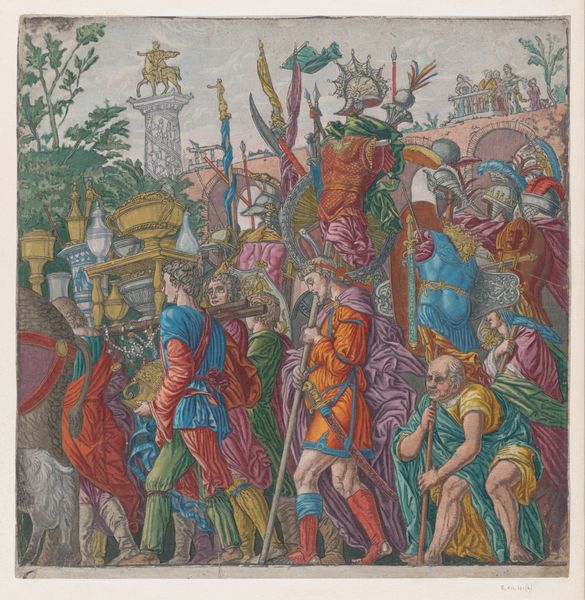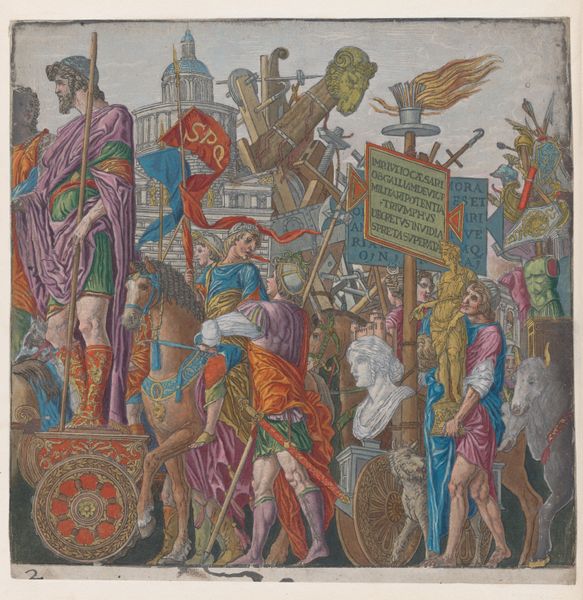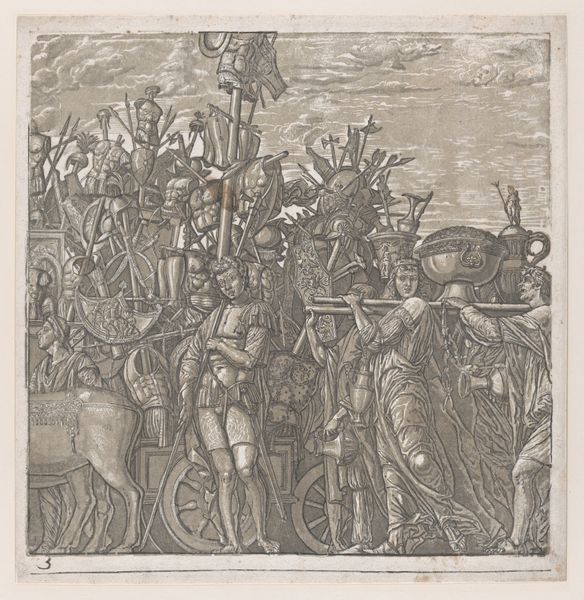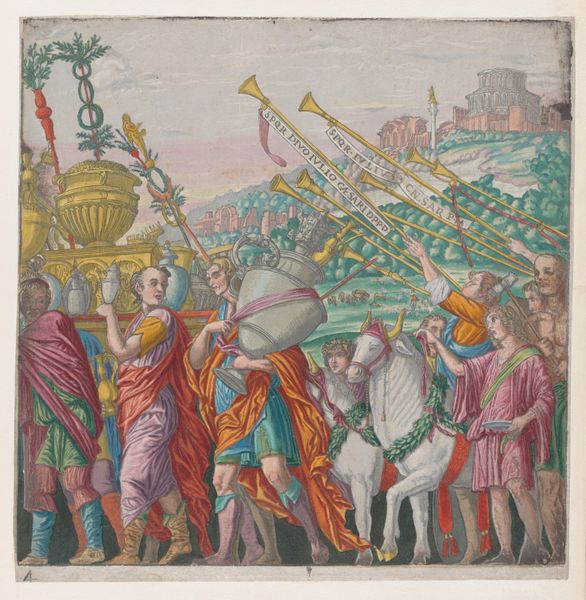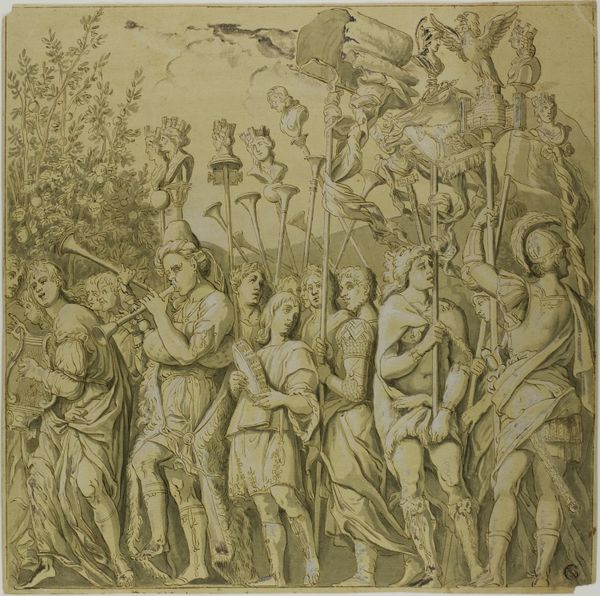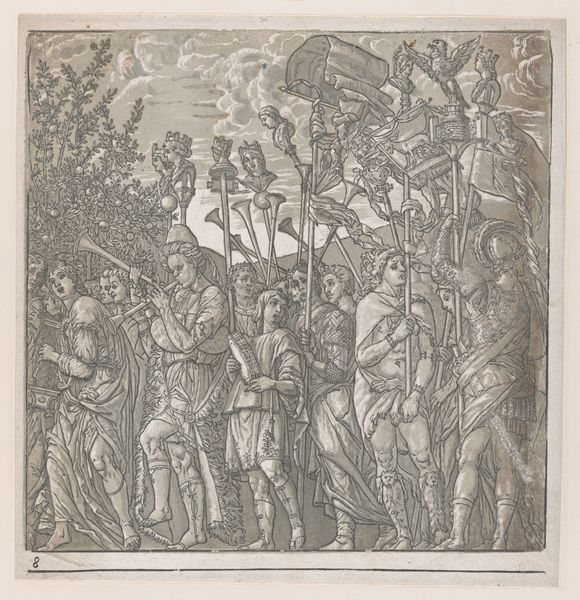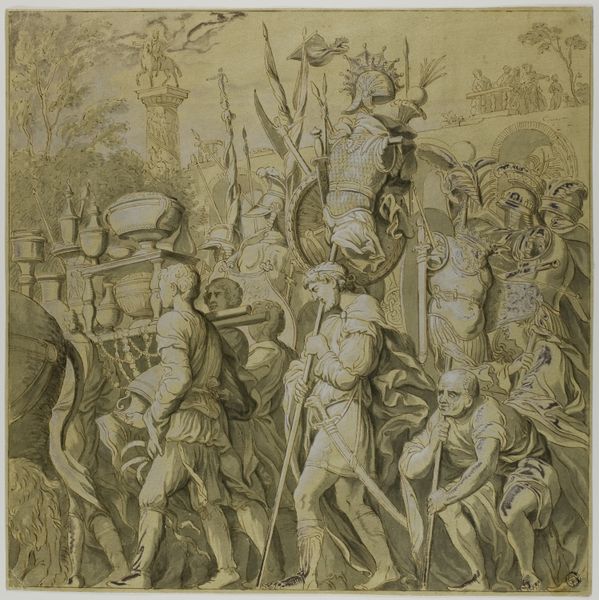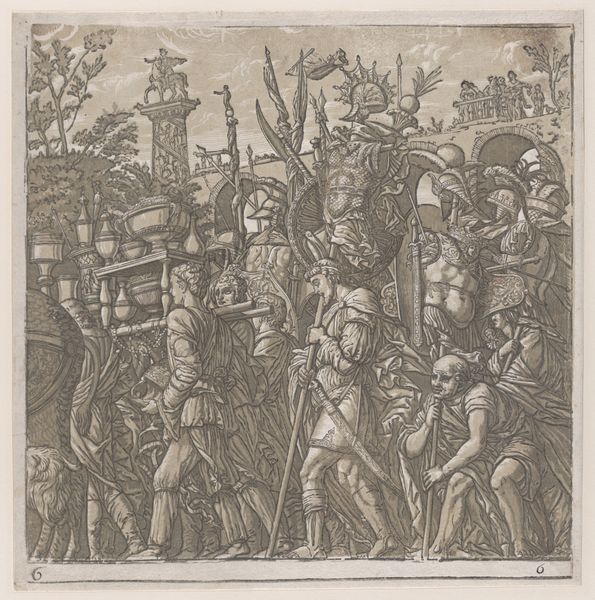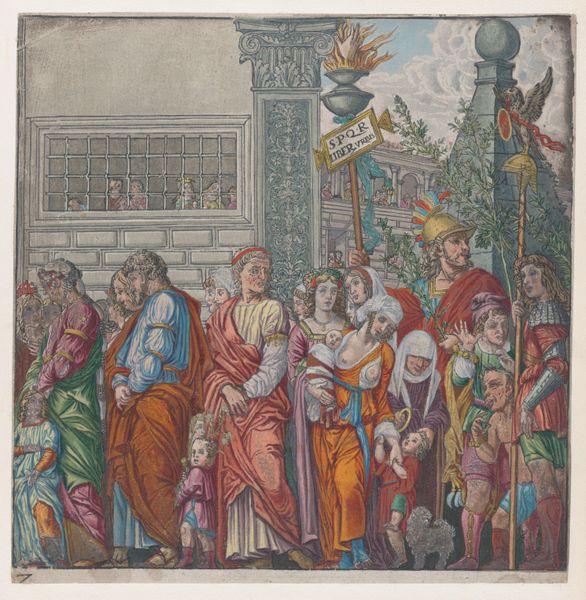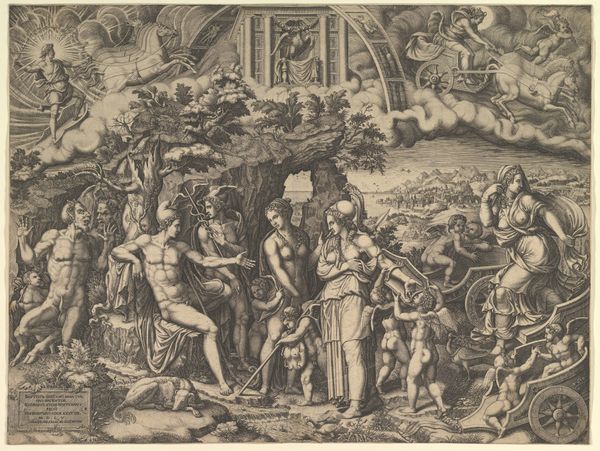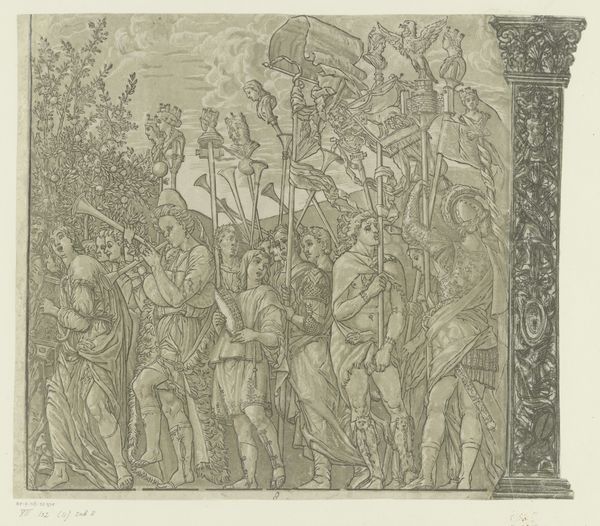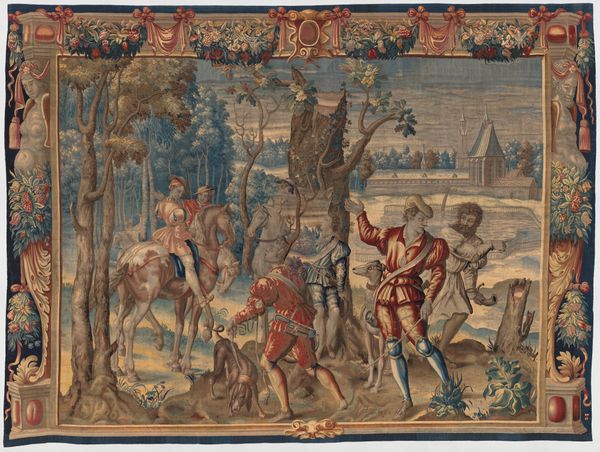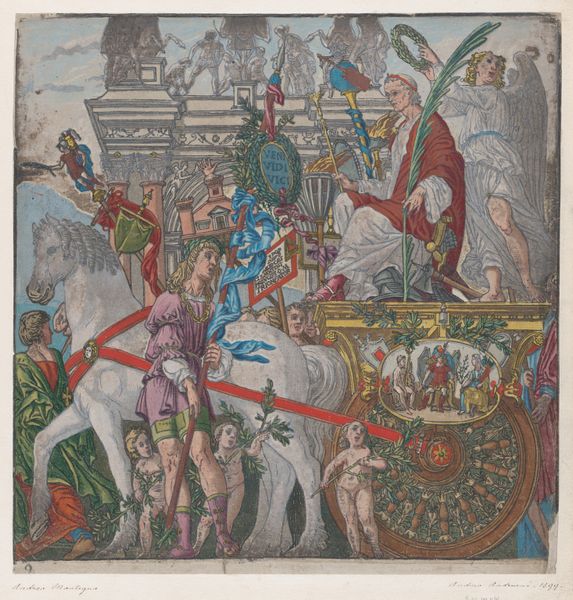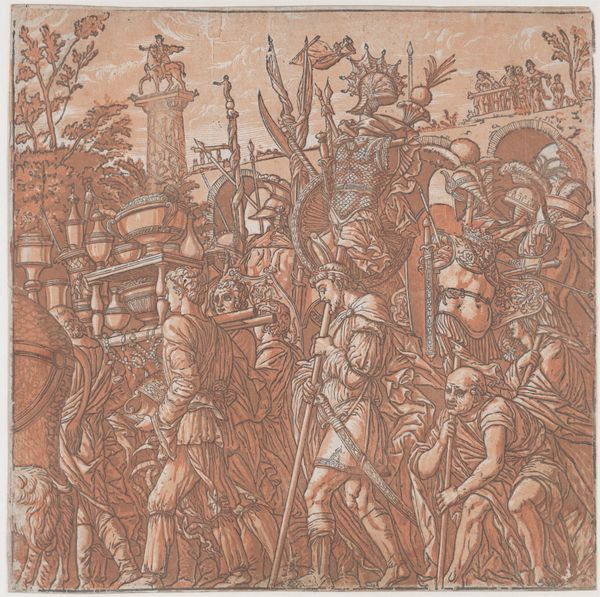
Sheet 7: Procession of Musicians and others holding standards, from "The Triumph of Julius Caesar" 1599
0:00
0:00
drawing, print
#
portrait
#
drawing
# print
#
figuration
#
11_renaissance
#
naive art
#
men
#
wall painting
#
watercolour illustration
#
history-painting
#
musical-instrument
#
watercolor
Dimensions: Sheet: 14 5/8 × 14 9/16 in. (37.2 × 37 cm)
Copyright: Public Domain
Curator: This is Sheet 7: "Procession of Musicians and others holding standards, from The Triumph of Julius Caesar", created around 1599 by Andrea Andreani. It's currently held at the Metropolitan Museum of Art. What are your first thoughts? Editor: Immediately, I’m struck by the color palette. It’s muted, almost faded, and creates a surprisingly dreamlike quality for a scene depicting a military triumph. The figures, while clearly defined, possess a sort of washed-out ethereal beauty. Curator: It's a powerful example of how cultural memory informs our perception of history. These aren’t just generic figures; they evoke archetypes. Notice the symbolic standards held aloft—eagles, crowned busts—each resonating with layered meanings of power, legacy, and conquest that shaped Renaissance-era worldviews. Editor: Absolutely. And the composition, the layering of figures almost in bas-relief, emphasizes flatness over depth. The repetition of forms—the trumpets, the banners—creates a rhythmic visual pattern. It’s as if the triumph is presented as a series of ornamental motifs, rather than a realistic event. Curator: These ornamental motifs become almost psychological, representing the projected desires and fears associated with Caesar. The very act of depicting the "Triumph" is to participate in this mythmaking. Look at how musical instruments—symbols of harmony, discord, propaganda—are interwoven within military iconography. What emotional effect does this synthesis of music and military grandeur create? Editor: It's intriguing, isn't it? It's as though the precision is softened, and the narrative becomes slightly diffused. The attention to detail isn't photographic realism, but closer to rendering the mood that would accompany such pomp. Curator: This allows Andreani to explore a broader cultural story of heroism—how symbols of triumph shape collective consciousness and political identities. It serves as a lens to better understand the enduring allure and risks linked to imperial authority. Editor: Well said! I confess that I'm still marveling at the composition; what I initially took for simple symmetry yields such evocative emotional impact through a closer look at tone, color, and rendering. Thank you! Curator: The artwork encourages a dialogue between present perceptions and past understandings. To realize our understanding can transform how cultural heritage speaks across different eras is a treasure.
Comments
No comments
Be the first to comment and join the conversation on the ultimate creative platform.
